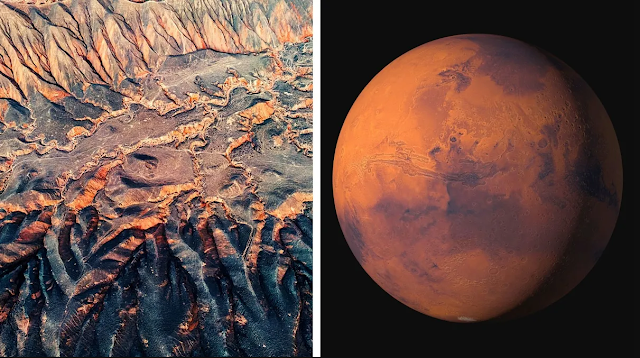The Red Planet is hiding an appealing secret.
Scientists have discovered a world-historic discovery on Mars: “significant amounts of water” are hiding inside the Red Planet’s Valles Marineris, its version of our grand canyon system, according to a recent press release from the European Space Agency (ESA).
And up to 40% of material near the surface of the canyon could be water molecules.
The newly discovered volume of water is hiding under the surface of Mars, and was detected by the Trace Gas Orbiter, a mission in its first stage under the guidance of the ESA-Roscosmos project dubbed ExoMars.
Signs of water were picked up by the orbiter’s Fine Resolution Epithermal Neutron Detector (FREND) instrument, which is designed to survey the Red Planet’s landscape and map the presence and concentration of hydrogen hiding in Mars’ soil.
It works like this: while high-energy cosmic rays plunge into the surface, the soil emits neutrons. And wet soil emits fewer neutrons than dry soil, which enables scientists to analyze and assess the water content of soil, hidden beneath its ancient surface.
Scientists have already discovered water on Mars, but most earlier discoveries detected the substance crucial to life as we know it near the poles of the Red Planet, subsisting as ice.
Only very small pockets of water had shown up at lower latitudes, which was a big downer because future astronauts on Mars will need a lot of water, and there are better prospects for settling the planet at lower latitudes.
But now, with what seems like a comparative abundance of water in Valles Marineris, we’ve taken a major step toward establishing a reliable source of water on the closest alien world.
“The reservoir is large, not too deep below ground, & could be easily exploitable for future explorers,” read a tweet on the announcement from ExoMars. That sounds basically great! But it’s too soon for Musk to pack up his bags and fly to the site, since much work is left to be done. A study accompanying the announcement, published in the journal Icarus, shows that neutron detection doesn’t distinguish between ice and water molecules. This means geochemists need to enter the scientific fray to reveal more details. But several features of the canyon, including its topology, have led the researchers to speculate that the water is probably in solid form (ice). But it could also be a mixture of solid and liquid.
“We found a central part of Valles Marineris to be packed full of water — far more water than we expected,” said Alexey Malakhov, co-author of the study, in the ESA release. “This is very much like Earth’s permafrost regions, where water ice permanently persists under dry soil because of the constant low temperatures.” So while we don’t yet know the specific form of water is lying under Mars’ vast system of canyons, the first human mission to Mars may consider exploring this area a major priority.
This was a breaking story and was regularly updated as new information became available.
